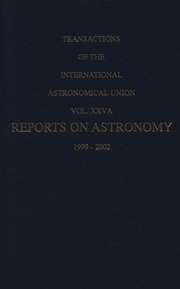No CrossRef data available.
Article contents
Astronomy in Uzbekistan
Published online by Cambridge University Press: 25 April 2016
Extract
Ulugh Beg Astronomical Institute (UBAI) of the Uzbek Academy of Sciences is one of the oldest scientific institutions not only in Uzbekistan, but in the whole of Central Asia as well. There are five departments in the institute. The main directions of research are solar physics, young non-stationary and close binary stars in star formation regions, satellite geodynamics, non-linear and non-stationary evolution of galaxies. Helioseismology studies carried out in the frame of the IRIS (International Research on the Interior of the Sun) and TON (Taiwan Oscillation Network) projects. Astrophysical programmes such as a search for periodicity in star-formation regions, study of close binary stars in the same regions, as well as in open clusters, CCD photometry of extra-galactic objects as gravitation lenses have been made at the Maidanak Observatory, which is located in the south-east of Uzbekistan. Monitoring of the seeing at Mt. Maidanak from 1996 to 1999, using ESO Differential Image Motion Monitor, showed that its atmospheric conditions are comparable with the best international observatories. The present status of the main fields of research and prospects are discussed. (Co-author is Shurat A. Ehgamberdiev, Uzbekistan.)
- Type
- Section 4: Current Status of Astronomy Research in Developing Countries
- Information
- Copyright
- Copyright © Astronomical Society of Pacific 2001


